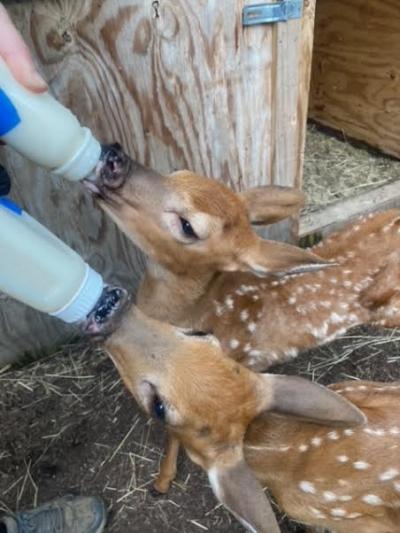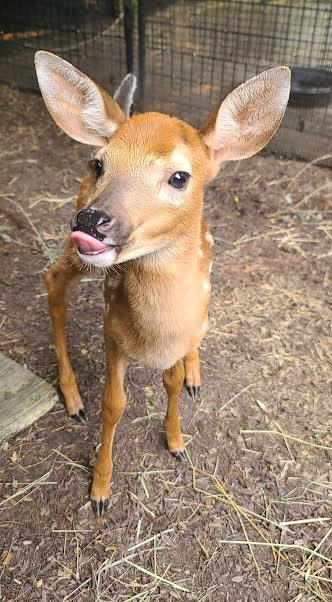Zoo visitors can fawn over orphaned deer
A female white-tailed deer fawn orphaned in Dartmouth when she was just days old has found a new home at Buttonwood Park Zoo in New Bedford.
The fawn, named Olive by the staff, arrived at the zoo in early summer, according to information provided by the zoo’s media relations department.
She required hand-rearing by the staff and needed about two months of bottle feeding, weight checks and completing the required quarantine before she could be placed in a zoo habitat.
The zoo has “a long history in managing deer’’ and “will work to educate our guests on the impact humans can have on local wildlife and actions that can be taken to minimize our imprint on the environment,’’ Zoo Director Keith Lovett said.
Weeks after the zoo took in the deer from Dartmouth, she was joined by a second female fawn found alone in western Massachusetts. She was named Autumn.
Olive and Autumn are the first white-tailed deer to inhabit the zoo since 2017.
The fawns have moved into a temporary habitat near their future home in the zoo’s bison habitat. They will eventually share the half acre of space with Sarah the bison and about 16 species of waterfowl.
“As part of our mission related to environmental education and the conservation of wildlife, the zoo is proud to provide homes to many native species that are injured or orphaned in the wild,” Lovett said.
Although these fawns were placed at the zoo in conjunction with wildlife specialists from Mass Wildlife, the public is urged to leave fawns alone.
Fawns are born in late May and early June. It is not uncommon for fawns to be left alone for six to eight hours at a time, according to information provided by state wildlife experts.
Even if you see a fawn alone for several days, experts advise they be left alone, as the mother is likely feeding or bedding nearby.
Does visit their fawns to nurse very infrequently, a behavior that helps fawns avoid detection by predators. Fawns are usually quite safe when left alone because their color pattern and lack of scent help them to remain undetected.
















